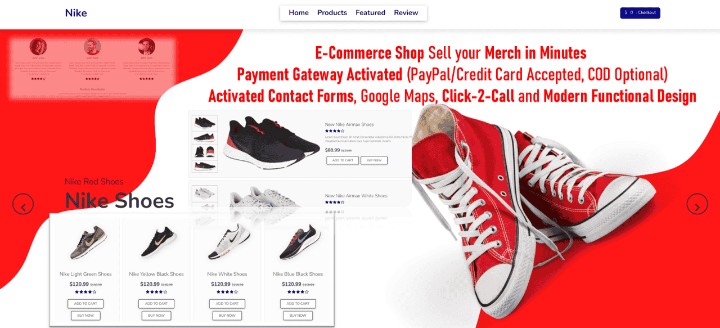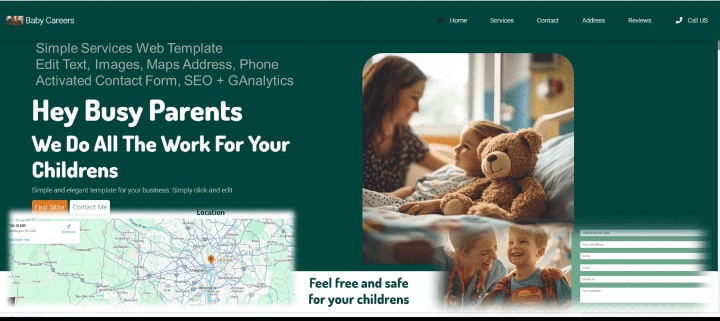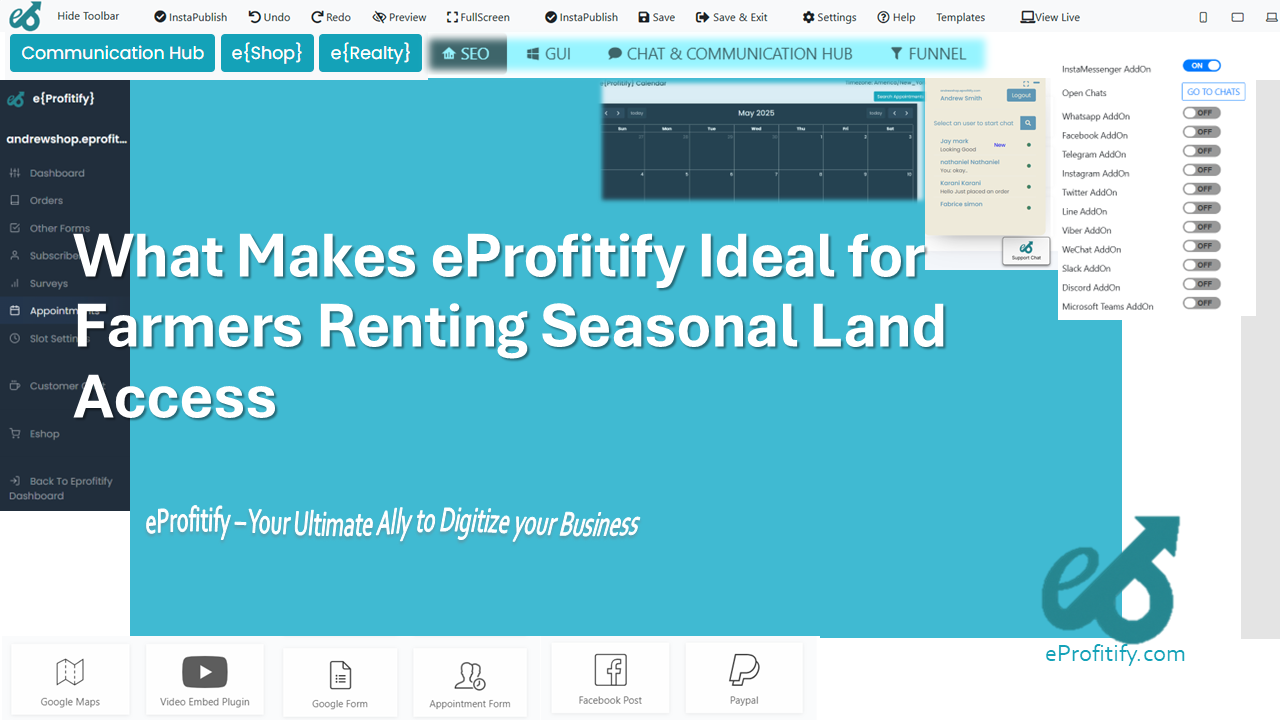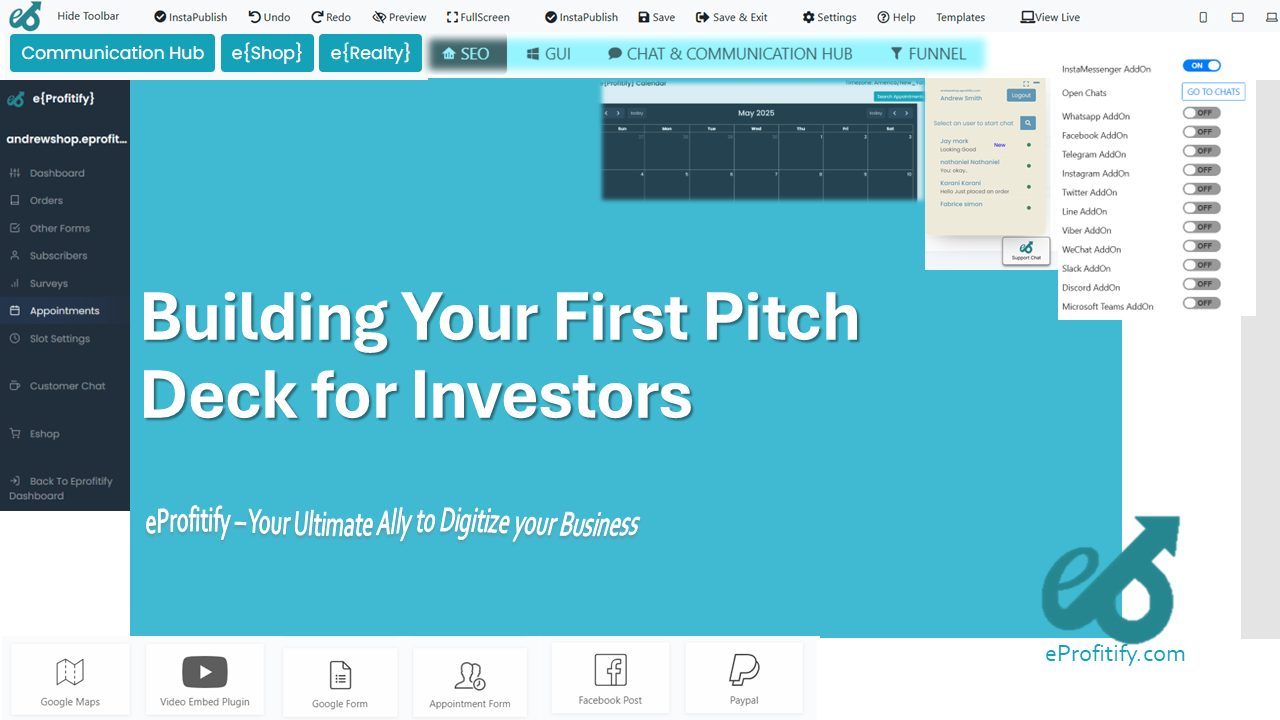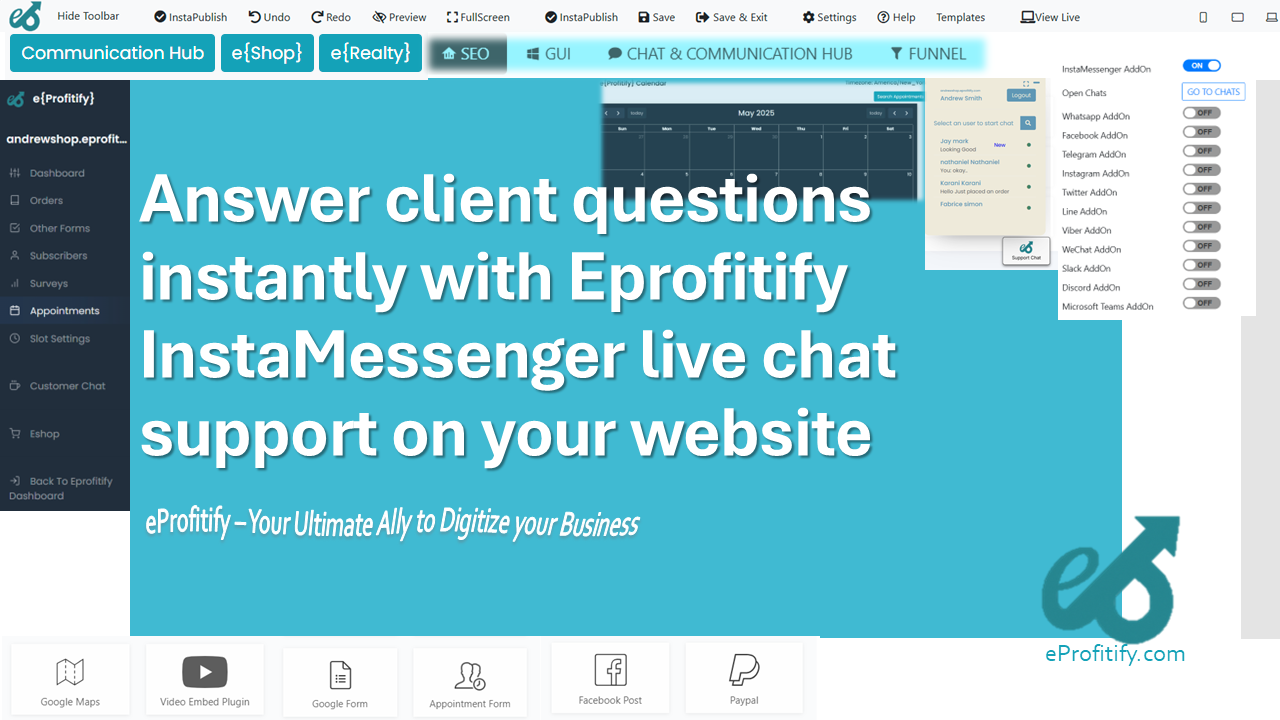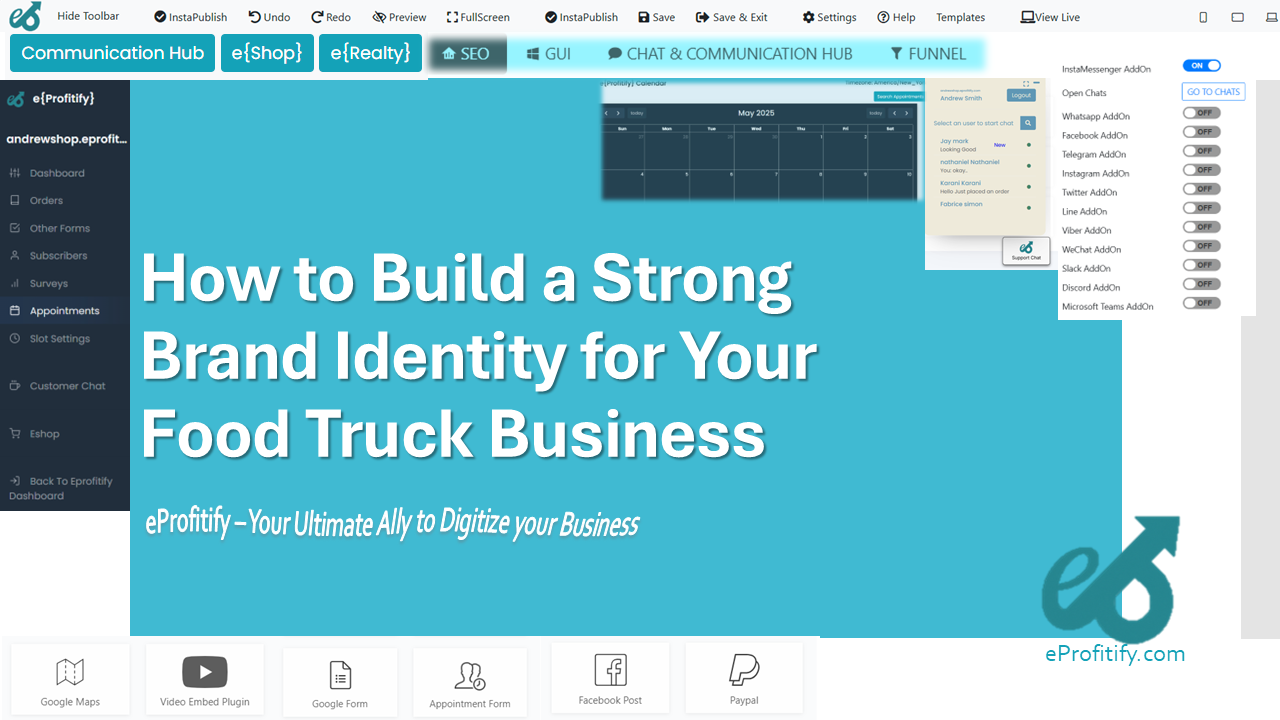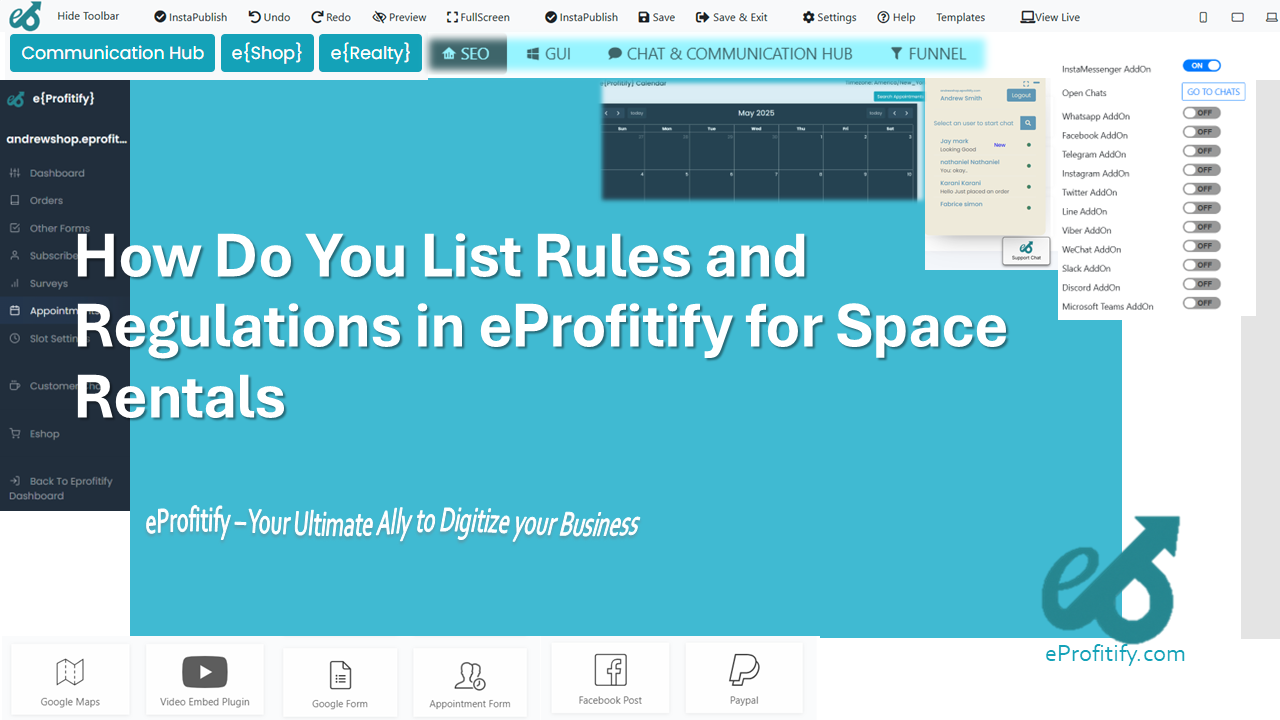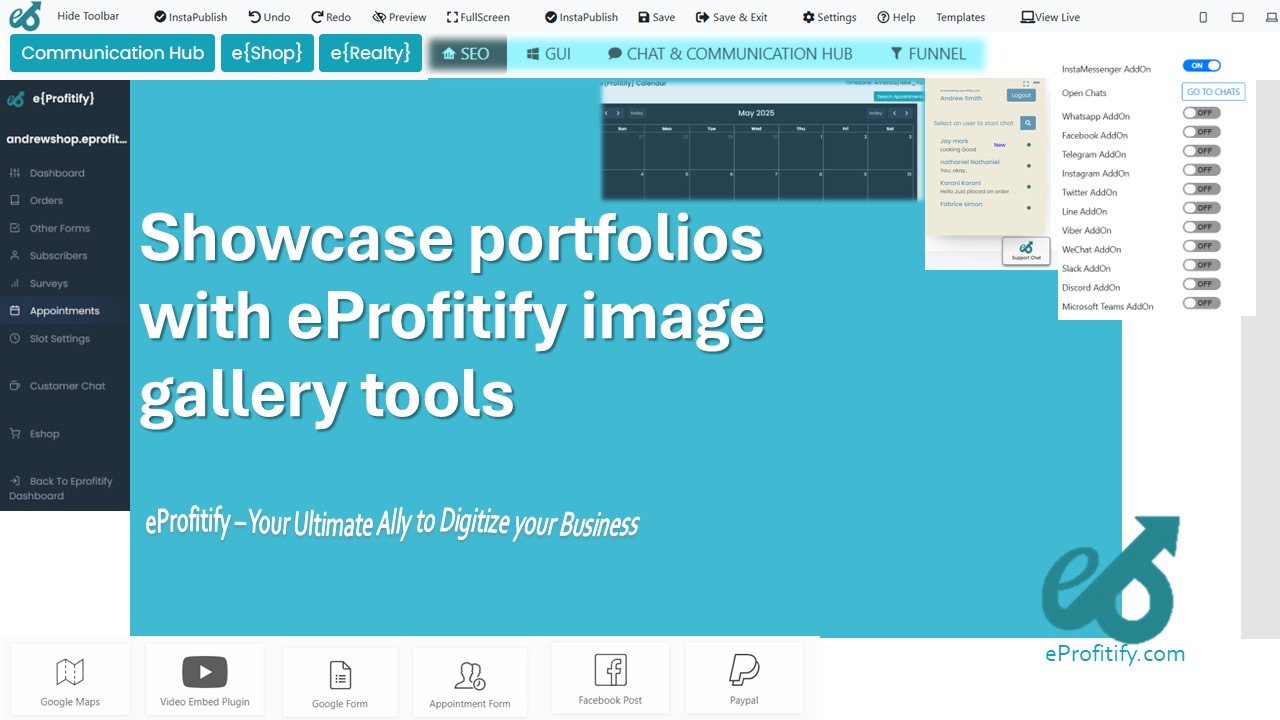Using Checklists Templates and Tools as SEO Magnets

Schedule a LIVE Zoom call with an eProfitify Expert.
In the rapidly evolving digital landscape, SEO remains a cornerstone of online visibility and audience engagement. As businesses compete for attention, leveraging checklists, templates, and tools has emerged as a strategic way to attract organic traffic, enhance user experience, and establish authority. These resources act as "SEO magnets," drawing in audiences while streamlining workflows. This article explores their impact, highlights relevant statistics, and introduces eProfitify—a leading website publishing and management platform with robust features like instant messaging, appointment management, ecommerce, CRM, and more.
The Power of Checklists in SEO
Checklists simplify complex tasks, making them highly shareable and inherently valuable to users. For SEO, checklists serve dual purposes: they position brands as experts and improve on-page optimization. A study by CoSchedule found that content featuring checklists is 4x more likely to be shared than standard blog posts, amplifying backlink opportunities. Additionally, checklists often target long-tail keywords, such as "SEO checklist for beginners" or "website optimization guide," which have lower competition and higher intent.
For instance, a "Technical SEO Audit Checklist" can attract web admins searching for actionable steps to fix crawl errors or improve site speed. By embedding internal links to related content (e.g., "How to Fix 404 Errors"), websites increase dwell time and reduce bounce rates—key ranking factors. eProfitify enhances this strategy with pre-built SEO checklist templates, enabling users to create, customize, and publish optimized guides directly through its intuitive CMS. The platform’s integration with analytics tools further allows businesses to track checklist performance in real time.
Templates: Scaling Content Quality and Consistency
Templates standardize content creation, ensuring brands maintain consistency while saving time. SEO-friendly templates for blog posts, product descriptions, or metadata tags help maintain keyword density, header hierarchies, and readability. According to Venngage, 49% of marketers say visual content (e.g., infographic templates) drives more engagement than static text, which aligns with Google’s preference for rich, multimedia content. Templates also cater to mobile-first indexing—a critical factor given that 54.8% of global web traffic comes from mobile devices (Statista, 2023).
eProfitify offers a library of customizable SEO templates, including schema markup generators and mobile-responsive design layouts. These tools ensure compliance with Google’s Core Web Vitals, which measure loading speed, interactivity, and visual stability. For instance, a landing page template with embedded schema markup can enhance local SEO by structuring business hours, reviews, and location data. The platform’s drag-and-drop editor simplifies optimization, enabling users to add alt text, internal links, and meta descriptions without coding.
SEO Tools: Driving Efficiency and Innovation
Automation tools are indispensable for modern SEO. From keyword research to competitor analysis, they identify gaps and opportunities at scale. The global SEO tools market is projected to reach $10.8 billion by 2026 (Grand View Research), reflecting their growing importance. Features like rank tracking, backlink monitoring, and AI-powered content optimization empower businesses to stay ahead.
eProfitify stands out with its all-in-one toolkit. Beyond standard SEO audits, its CRM module segments audiences based on behavior, enabling hyper-targeted content strategies. The appointment management system integrates with Google My Business, boosting local SEO by displaying real-time availability. Meanwhile, the instant messaging feature reduces response times, improving user engagement—a ranking factor highlighted in 86% of SEO success stories (BrightLocal). For ecommerce, the platform’s product schema tools and inventory management automate SEO for product pages, driving visibility on search and shopping engines.
Case Study: eProfitify’s Holistic Impact
Consider a local bakery using eProfitify to optimize its online presence. By utilizing SEO checklists, the bakery identifies missing alt tags and fixes mobile usability issues. Using blog post templates, it publishes "10 Tips for Perfect Croissants" with embedded recipe videos, targeting foodie audiences. The CRM tracks customer preferences, prompting personalized email campaigns that reduce cart abandonment by 35% (Baymard Institute). The appointment system syncs with Google Calendar, increasing bookings by 20% through local search visibility. Over six months, organic traffic grows by 60%, with a 25% boost in conversion rates from optimized product pages.
Statistics Reinforcing the Strategy
- Websites with optimized headers (H1/H2 tags) see 12.3% higher rankings (Backlinko).
- Pages with video content attract 3x more inbound links (moz).
- 53% of shoppers say mobile site quality impacts purchase decisions (Think with Google).
- Brands using CRM-driven personalization report 20% higher sales (Salesforce).
Conclusion
Checklists, templates, and tools are not just productivity aids—they’re SEO powerhouses. By delivering value, improving technical health, and fostering engagement, they magnetize traffic and conversions. Platforms like eProfitify elevate this approach by unifying publishing, communication, and analytics into a seamless ecosystem. Its features—from instant messaging to CRM—align with Google’s emphasis on user experience, making it a go-to for businesses aiming to dominate search rankings. As algorithms evolve, integrating these resources will remain key to staying visible, competitive, and profitable in the digital age.
